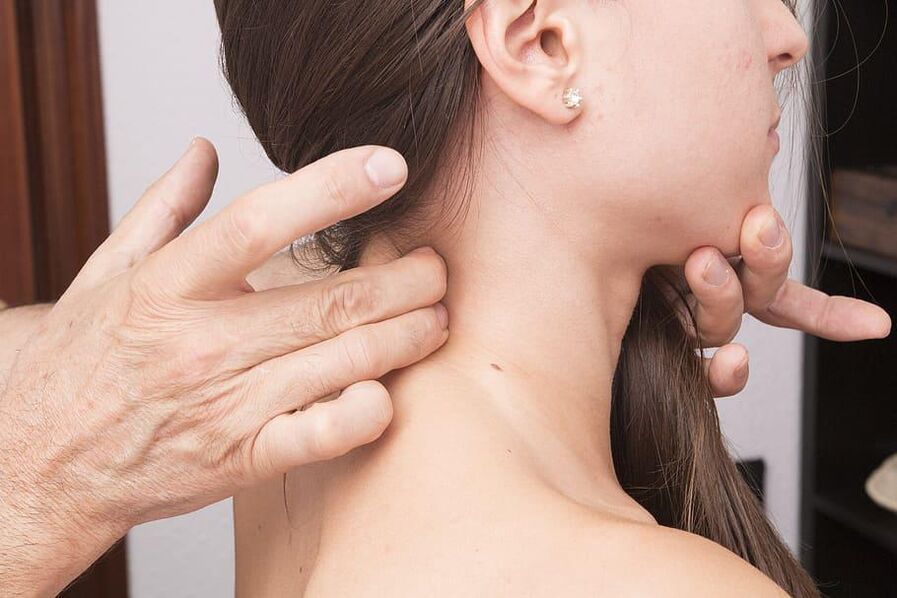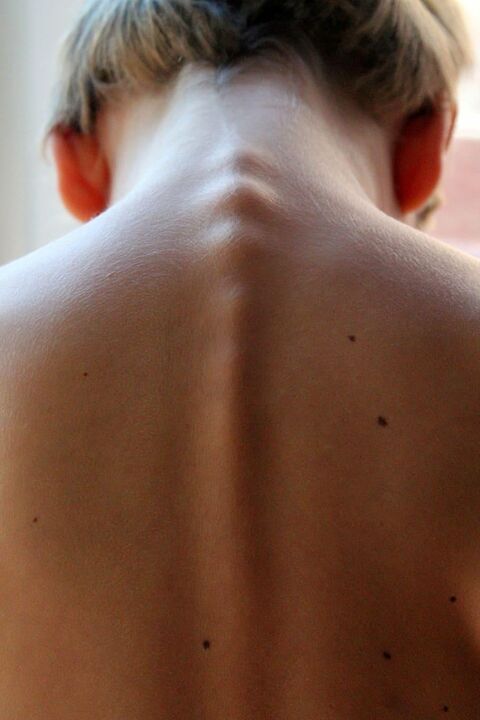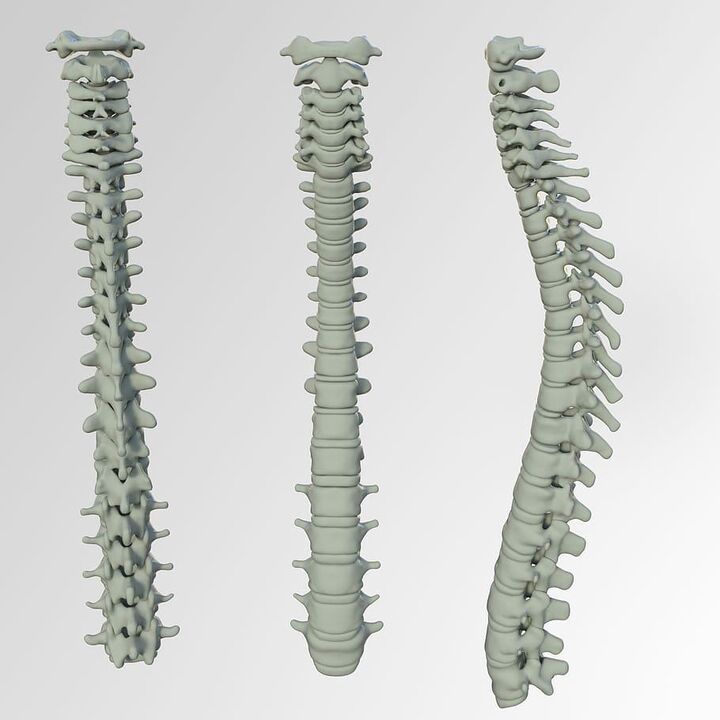Cervical osteochondrosis is a very common disease in the modern world. Many people have it in the initial phase, but they don't even suspect it. The widespread osteochondosis of the neck was due to the fact that people began to sit more and move less. Let's take a closer look at the reasons for the development of this unpleasant disease and methods to fight it.

What is cervical osteochondosis?
Therefore, cervical osteochondrosis is a degenerative dyenerative disease of the cartilage tissues of the musculoskeletal system. The disease is characterized by pathological changes in the structure of the cartilage, which lead to a violation of the anatomical structure of the elements of the spine, interrupt the mobility of the skeleton and cause painful sensations. The disease can influence any part of the spine, but due to the excessive mobility and vertebral dimensions in miniature, the cervical segment often suffers from this pathology. The neck is experiencing impressive loads every day. The turns of the head and even the fact of its properties force the vertebrae and the intervertebral discs to work intensely. From the regular exposure from the outside, the intervertebral discs are thinner, the microocacks appear on them. Over time, their height decreases, they begin to change thickly in the smaller way and cease to perform their main function: the amortization of the vertebrae.
The causes of cervical osteochondosis
The causes of the development of the disease, first of all, are due to the aging correlated to the age of the body and destruction in the development of bones and cartilage. The following causes of osteochondrosis can also be called:

- Violation of posture
- Reduction of motor activity following a sedentary lifestyle
- The excess weight, which is the result of metabolic disorders, has a load on intervertebral discs
- Hereditary factor
- Long -term physical activity
- spine anomalies
Symptoms of cervical osteochondosis
Cervical osteochondrosis has specific manifestations. This is due to the anatomical characteristics of the cervical column. Very often, patients complain of pain of various intensity, increasing from a long stay in a position. Other symptoms are often added to pain:
- weakness in the upper limbs
- numbness and tingling hands
- rigidity when moving your head
- Dizziness (suggests that the damaged elements influenced the arteries)
- Leaving the lips
- Feeling of a coma in the throat
Signs of cervical osteochondosis
In medicine, it is customary to separate the signs of osteochondrosis based on the nature of the symptomatic manifestations combined in a single syndrome. 4 of these syndrome are distinct:
- Koreshka - indicates pinched nerve rays, which causes severe pain, as well as a series of autonomous symptoms (dizziness, weakness, lump in the throat);
- Vertebral artery - damaged elements serve the large vertebral artery, which is the cause of serious headaches, dizziness;
- Vertebral - causes pain in the neck itself;
- CARICA - It is masked under an attack by Angina Pectoris, manifested by severe chest pain, similar to a heart attack.
Development phase of cervical osteochondosis
1 degree of osteochondrosis

It is characterized by the beginning of the destruction of the intervertebral records. Crepes are formed in the fibrous ring, the strength and elasticity of the disc are formed, its height decreases, due to which the nerve roots are crushed. A characteristic painful pain appears. Sometimes in 1 stadium (preclinical) this pain can be absent and osteochondosis proceeds with a moderate discomfort in the neck.
2 degrees of osteochondrosis
If osteochondrosis of the 1st degree has not been treated or the treatment was not effective, osteochondosis of the 2nd degree - chronic osteochondosis occurs. The pain becomes constant, the destruction and seal of the intervertebral disc continue and leads to small dislocations of the cervical vertebrae. With the cervical osteochondrosis, at this stage a head syndrome that can develop can develop. This syndrome is characterized by severe pain and a person is forced to support his head in a fixed state to reduce pain.
3 degrees of osteochondrosis
The fibrous ring is already almost destroyed, which leads to complications of the osteocondrosis - protrusion of the intervertebral disc or intervertebral. In 3 phases of the osteocondrosis, the intensity of the pain can decrease, since the cartilage tissue hit in the disc between the vertebrae is no longer present, which means that there is no source of pain, however, the pinch of the nerve roots remains, therefore the pain does not completely leave.
Diagnosis of cervical osteochondosis
If there is the suspicion of the presence of cervical osteochondrosis, it is necessary to promptly contact a medical institution. A complete diagnosis will help identify the disease, evaluate its degree and understand the causes of the development of the pathology. A preliminary diagnosis is made on the basis of inspection and palpation - with osteochondrosis, the tension of the cervical muscles is noted, in some cases the deformation of the spine is evident. After the objective diagnosis, the doctor sends further studies to the patient. The following diagnostic methods are used to confirm the diagnosis:
A preliminary diagnosis is made on the basis of inspection and palpation - with osteochondrosis, the tension of the cervical muscles is noted, in some cases the deformation of the spine is evident. After the objective diagnosis, the doctor sends further studies to the patient. The following diagnostic methods are used to confirm the diagnosis:
- Magnetic resonance imaging
- X -ray (lateral and straight)
- Computerized tomography
To determine the cause of the development of the pathology, it is possible to prescribe an ultrasound examination of the neighboring organs, ECG of the heart, Duplex scan of blood vessels, blood tests and urine.
Treatment of cervical osteochondosis
The treatment of osteochondrosis requires an integrated approach. For the temporary elimination of pain, painkillers are used, but the basis of therapy is physical therapy and massage. The massage helps to relieve muscle hypertension, improving pain. The procedures also restore normal blood circulation, improving the supply of damaged tissues. Based on the results of the massage course, the voltage is removed from the cervical region, the load on the spine is redistributed. Pharmacological treatment. Medicines relieve pain and inflammation, restore blood circulation and eliminate cramps in the neck muscles. For this, it is possible to use the following groups of drugs: glucocorticosteroids, analgesics, muscle relaxants, etc. Physiotherapy treatment. In addition to taking drugs to relax near the cervical muscles, eliminating cramps and normalizing blood circulation will help physiotherapy procedures: acupuncture, laser effect, magnetotherapy, UHF therapy, sounds, etc. Therapeutic gymnastics. Special physical exercises will help the patient to strengthen the muscle frame, align the posture and improve the flow of blood to the top of the spine. In the case of the advanced phases of the osteochondrosis of the cervical column or with an insufficient effectiveness of conservative methods, surgery is required.
Therapeutic gymnastics. Special physical exercises will help the patient to strengthen the muscle frame, align the posture and improve the flow of blood to the top of the spine. In the case of the advanced phases of the osteochondrosis of the cervical column or with an insufficient effectiveness of conservative methods, surgery is required.
Prevention of cervical osteochondosis
To prevent the development of cervical osteochdrosis, it is recommended: when sitting, make sure to take breaks for five minutes every hour, avoid loads on the neck; Do not make sharp movements of the head, monitor posture; avoid hypothermia; engage in physical education, swimming; Eat correctly; The dream should be on a solid mattress and on a low pillow, the folding angle of the neck should not exceed 15 degrees; After 25 years, avoid the load of shock on the spine (jumping, running). In any case, when the symptoms of the disease appear, be sure to visit a doctor. Don't medicate!














































